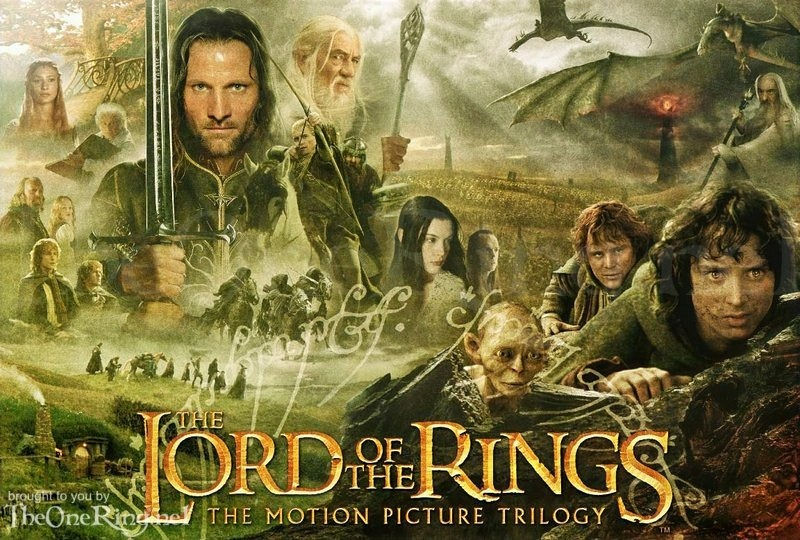The Hobbit- A Lifechanging Read
- staciefwilliams
- Oct 9, 2020
- 4 min read
A Brief Intro
I'm sure many of you have had some exposure to The Hobbit in some form or another, but if not, here's a brief summary.
JRR Tolkien published the book in 1937, but it actually began as a bedtime story he told to his son, Christopher. Newsweek.com published an article discussing how the book came about and some of the inspirations behind it. You can find that article here.
Tolkien also created various art pieces for his world of Middle Earth, including a dust jacket (shown above).
The Hobbit is a children's story that follows Bilbo Baggins, a hobbit, across Middle Earth, on a quest to help thirteen dwarves reclaim their homeland. Along the way, the company faces many dangerous perils, before they even reach the end of their journey, where there is a dragon waiting for them. Bilbo's journey takes him to The Lonely Mountain, where he plays a key role in claiming the mountain from Smaug, the dragon. Bilbo's tale ends seemingly with a happy ending, as the dwarves do claim the mountain, and he returns home again.
This work by Tolkien is followed by the sequel trilogy, The Lord of the Rings.
First Impressions

"In a hole in the ground there lived a hobbit." This was the statement I remember hearing at the tender age of 5, as my father read me JRR Tolkien's The Hobbit. I had no idea what this book was about, except that there was a hobbit with hairy toes, thirteen dwarves (an increase from the seven I could identify in Snow White), Gandalf, something called a "Gollum", and a dragon. And barrels. I always remembered something about barrels as well.
I remember being so intrigued by this fantastic story, and terrified by the cover of the book, pictured to the left. Which was why, after my father finished the story and it was placed back into a boxed set with three other books that were much too large for my liking, I never wanted to have to pick up the book for myself.
And so I didn't.
A few- and by a few I mean 13- years later, I found myself living in my parent's basement once more between college semesters. I had watched the movie adaptations of those once too large books that lived in the boxed set with The Hobbit, and was drawn to the strange, scary cover art once again.
I figured there was no better time to revisit Bilbo Baggins in his hobbit hole. I was right, because suddenly, the strange song about Bilbo Baggins that my dad sang around the house suddenly made so much more sense. I didn't understand why they would sing such a great tale about a hobbit, because I couldn't put together why he was the hero of the story in the first place. No doubt, "The Ballad of Bilbo Baggins" makes much more sense when one has read Tolkien's words, as opposed to having viewed Peter Jackson's trilogy adaptation.
All jokes aside, after reading The Hobbit as an adult, not only did things such as the plot, and silly songs make more sense, but I gained a deeper understanding of the important things in life.
I lovingly reread the stories of trolls and elves and goblins and dragons. I learned about finding hope in dark times, and I learned that there is more to someone than their physical appearance. True, the story had some bearing on this, but Tolkien's writing and words were the true difference in my growth.
A Valuable Life
"If more of us valued food and cheer and song above hoarded gold, it would be a merrier world." -Thorin Oakenshield
This statement, made by Thorin on his deathbed, is what I would consider one of the most valuable lessons found in Tolkien's works. Thorin, as with some of us, was driven by a love of money and riches. Which are valuable, to some. But what I really think Tolkien was exceptional at communicating here, is that hoarded gold means nothing, when compared to the joys of life, such as food, cheer, and song.
Thorin's reference to his own greed shows his acknowledgement of his shortcomings, but is also a statement of his recognition of Bilbo's culture. The Tolkien Gateway discusses the history, culture, and disposition of hobbits, with some references taken from Tolkien's works itself. On page 2 of The Hobbit, Tolkien mentions that hobbits have two dinners, as often as they can get it. Rather than driven by gold, hobbits seek joy and peace, something that Bilbo exhibits many times, through the course of his adventure.
Finding Hope

Now, not all of us will get to embark on grand adventures, like our dear friend Bilbo. We may be unprepared, but I do believe each of us has our own adventures, our own paths to follow. I also believe that they will have their dark moments. There will be dragons, but as Bilbo's dear father said, and as Bilbo repeated to the dwarves as they hid from Smaug, "While there's life, there's hope."
Hope is a theme not only found in The Hobbit. You can find a further discussion on Tolkien's use of hope throughout his writings here.
We may feel terrified of the future, but there is hope. We may feel like we cannot see the way, and the darkness is suffocating. Yet, while breath is being drawn, there is hope. We may be tired, worn down, or lost, but while we still fight for our cause, there is hope. This was just one more lesson I learned from Bilbo's tale, that has changed my life.
And so, there it is. A brief discussion of The Hobbit, by JRR Tolkien. Remember what is of value, remember there is hope, and remember to bring a pocket hankie when you depart on your adventure.





Comments